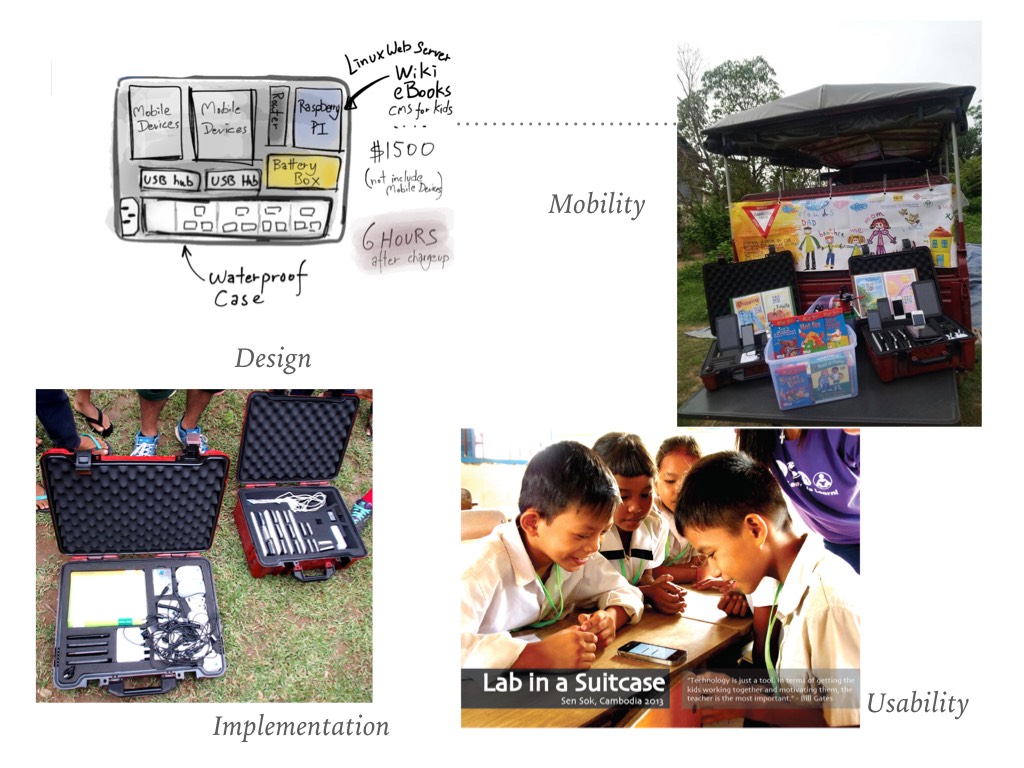The following projects are open to all students from all programmes. I do not have a quota for each project. I can take 7 students total.
Classroom / Lab in a Suitcase
In this project, you will design and build an learning system for a low-resource community.
Education is an investment into the next generation, and many developed countries spend quite a bit on it. In Hong Kong, for example, almost 20% of government expenditure is spent on education. Of course, they can still do more and do better. However, many developing countries lack even these resources. As a result, their teachers are often overworked, underpaid, and undertrained. It is not uncommon to see class sizes of 60+ kids in a classroom. Think about what this means for classroom management!
There are many excellent educational resources online and e-Learning is very popular in the developed world as a supplement to classroom teaching. However, in many developing countries, the Internet is not stable or fast enough to handle the bandwidth requirements. The students in these countries are then doubly disadvantaged — their own school system is underresourced, but they cannot access quality materials generated abroad.
Several years ago, we had the idea to make a “Lab in a Suitcase”. This “lab” consists of a server running on a low-cost Raspberry Pi computer, a battery-operated wifi router, a set of mobile devices, and some e-resources like storybooks. The whole thing is battery-operated and designed to be robust and easily usable.
The project worked well but there are of course lots more things that we could do. For example, could we make a proper platform so that kids could more easily browse for the books that they are interested in? Could we create a process flow that regularly sucks content from off the web and updates the server? The possibilities are endless.

There is a lot of room for personal preferences in this project. For example, if you are interested in hardware, you may wish to play around with the low-cost computers. We used Raspberry Pi before, but there is no reason why you can’t use a computer-on-a-stick, for example. If you like software design, the platform might be interesting for you to work on. If you like HCI, the interface that makes it easy and simple for the kids to browse content might be of interest.
PhotoRefraction
Mobile phones are very common these days. They also pack a lot of processing power. In previous years, we worked with the School of Optometry to develop an app that would do vision screening by analysing a photo of people’s eyes using machine learning and image processing.
We have a lot more data available now, and this may make it possible to do deep learning on these images. This is what you will explore in this project. If you are interested in machine learning, or image processing, this may be the project for you.